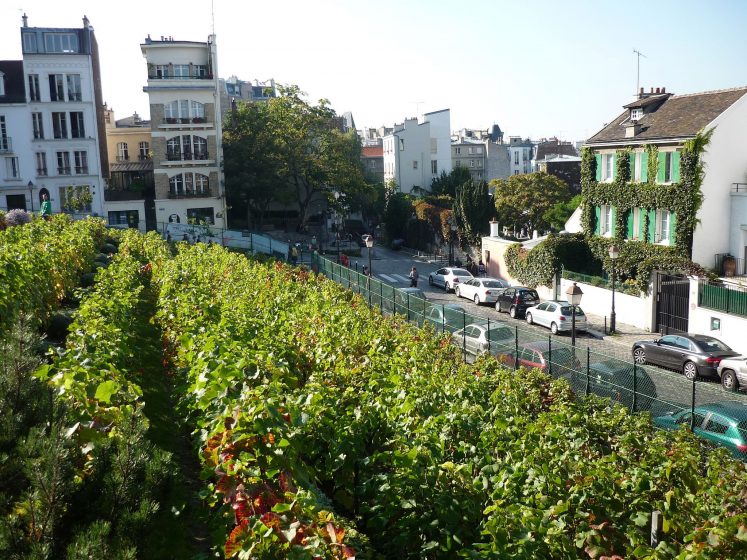The 6-Second Trick For City Blooming
The 6-Second Trick For City Blooming
Blog Article
The 5-Minute Rule for City Blooming
Table of ContentsLittle Known Facts About City Blooming.10 Simple Techniques For City BloomingThings about City Blooming8 Simple Techniques For City BloomingCity Blooming - An Overview
Fascinated in growing food available for sale in the City of Chicago? Assuming concerning starting a community yard? Changes to the Chicago Zoning Ordinance enable farming uses like community yards and urban farms in several components of the city. Below is a list of often asked concerns pertaining to the policies and policies that growers must consider when preparing a metropolitan agriculture job.
The zoning amendment does not modify any various other codes handling composting, building licenses, purchasing or renting City possessed residential property, service licenses or environmental contamination. There are existing codes that control these issues and they continue to be in complete result and may apply to your job. Area gardens are usually had or taken care of by public entities, civic companies or community-based organizations and maintained by volunteers.
Urban ranches grow food that is intended to be marketed, either on a not-for-profit or for-profit basis. Due to their industrial objective, urban ranches need a service permit.
9 Easy Facts About City Blooming Explained
Composting is allowed yet only for plant material that is created and used on site. The amount of compost material can not exceed 25 cubic backyards at any type of provided time according to the requirements in 7-28-715 of the City's Municipal Code. Yes. Because the soil at many new yard websites requires modifying, garden compost, dirt, wood chips, or various other products can be acquired to construct or enhance the expanding room - balcony and patio garden design.

If a building authorization is needed then the hoophouse will be considered an accessory structure. You can discover even more about the building license requirements by contacting the Division of Buildings. The 25,000-square-foot size limitation is intended to stop a single neighborhood yard from dominating a provided block or diminishing the block's existing residential or commercial character.
The restriction does not relate to gardens found in Public Open Space (POS) areas. Can there be more than one neighborhood yard that is 25,000 square feet on a single block? additional hints Yes. The size limitation puts on specific gardens, not to private blocks. No. Fencing is not called for, however, yards that have huge car park areas may be needed to set up fence or various other landscape design features.
Some Known Details About City Blooming
B1 & B2 districts call for that all commercial use tasks be carried out inside. Is fencing needed for metropolitan ranches? Fences may be needed, along with landscaping and screening, for specific car parking locations and outside job or storage locations depending on area and the certain activity taking area.
Urban farms call for building permits and zoning authorizations prior to building (garden care). Other kinds of city review may be needed depending on specific frameworks, activities, dimension, landscaping, licensing, public heath and stormwater monitoring problems.
Yes. The kind of certificate is established by what is occurring at the website. The Division of Company Matters and Customer Security can assist identify the certain type of service permit that's needed. Yes. Off street car park is required for the majority of business projects in Chicago. The required variety of garage is based upon the variety of staff members working with site and not the square video of the expanding area.
The smart Trick of City Blooming That Nobody is Talking About

Yes. An urban ranch can sell compost product produced on website, nonetheless, the procedure needs to adhere to the policies in 7-28-715 of the Chicago Municipal Code. Yes. Aquaponic systems are allowed inside on metropolitan ranches in several zoning districts. A zoning testimonial and structure authorization is called for in order to install structures or systems and a business permit is needed as described above.
As much as five hives or swarms of honey might be kept as an accessory use. Beekeepers have to register with the Illinois Department of Farming. For even more details regarding the recommended zoning modification you may contact the Department of Housing and Economic Growth, Bureau of Planning and Zoning at 312.744.8563.
Farming in cities and city areas A city ranch in Chicago. Urban agriculture refers to various techniques of growing. https://danielnold94107.wixsite.com/my-site-1/post/city-gardening-a-green-oasis-in-urban-spaces, handling, and dispersing food in urban locations. The term also applies to the location activities of animal husbandry, aquaculture, beekeeping, and cultivation in a metropolitan context. Urban agriculture is differentiated from peri-urban farming, which happens in rural locations at the side of suburban areas.
Not known Facts About City Blooming
It can entail an activity of organic cultivators, "foodies" and "locavores", who seek to form socials media based on a common values of nature and area holism. These networks can establish by way of formal institutional support, ending up being incorporated into neighborhood town as a "transition community" motion for lasting city advancement.
The extra straight accessibility to fresh vegetable, fruit, and meat products that may be understood with urban agriculture can boost food security and food safety and security while decreasing food miles, leading to lower greenhouse gas emissions, consequently adding to environment modification mitigation. A few of the initial evidence of city agriculture originates from Mesopotamia.
Report this page